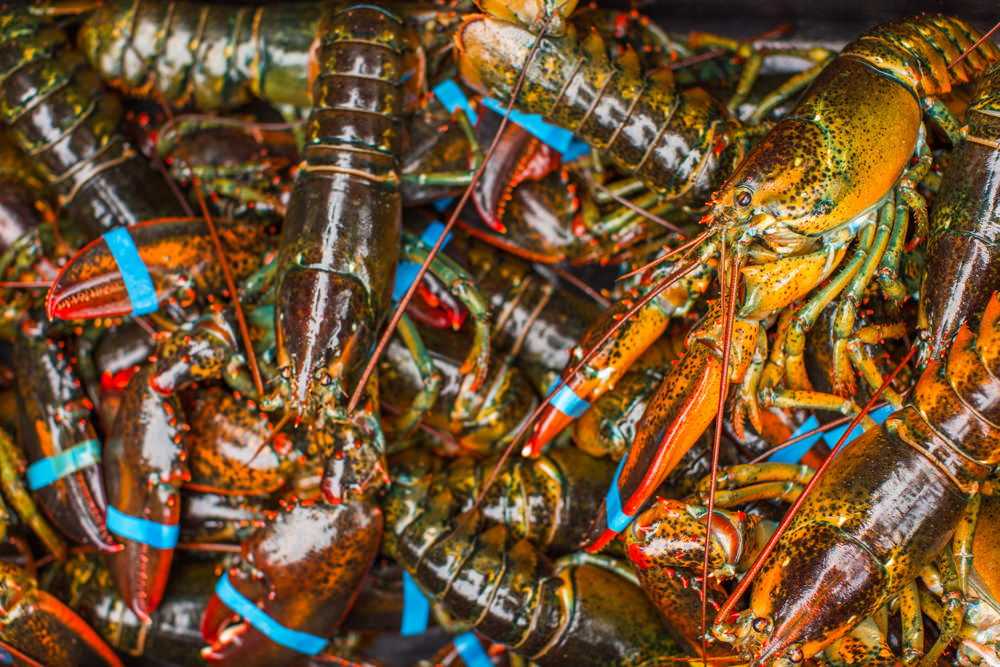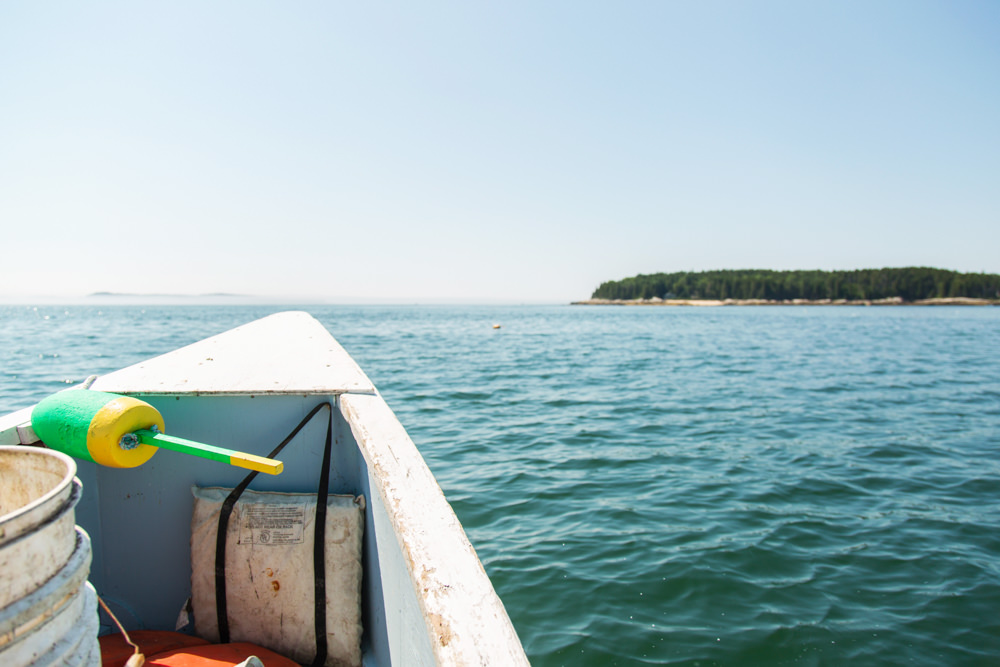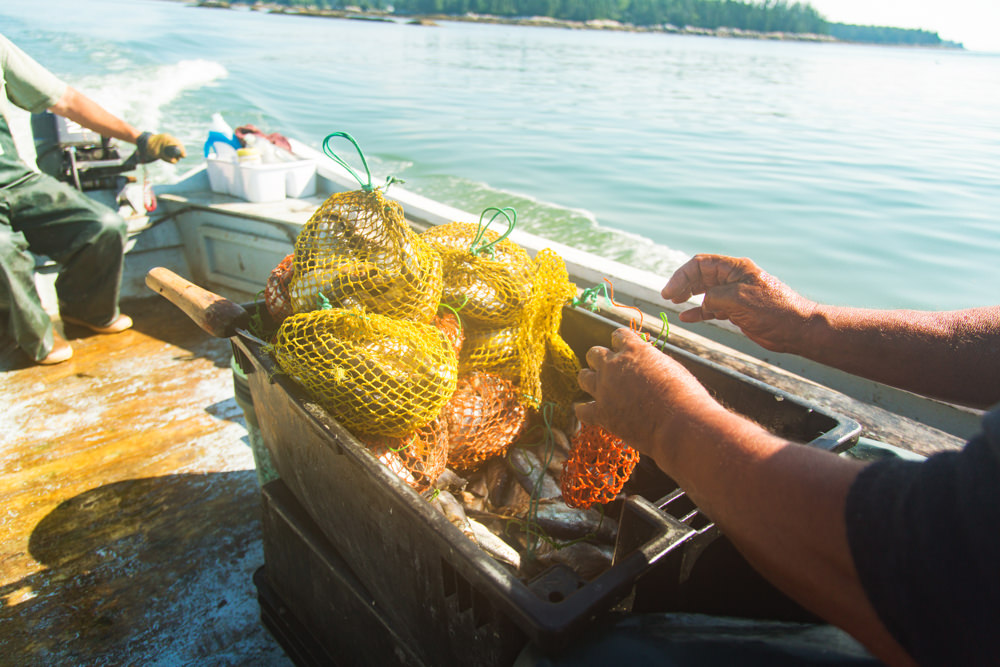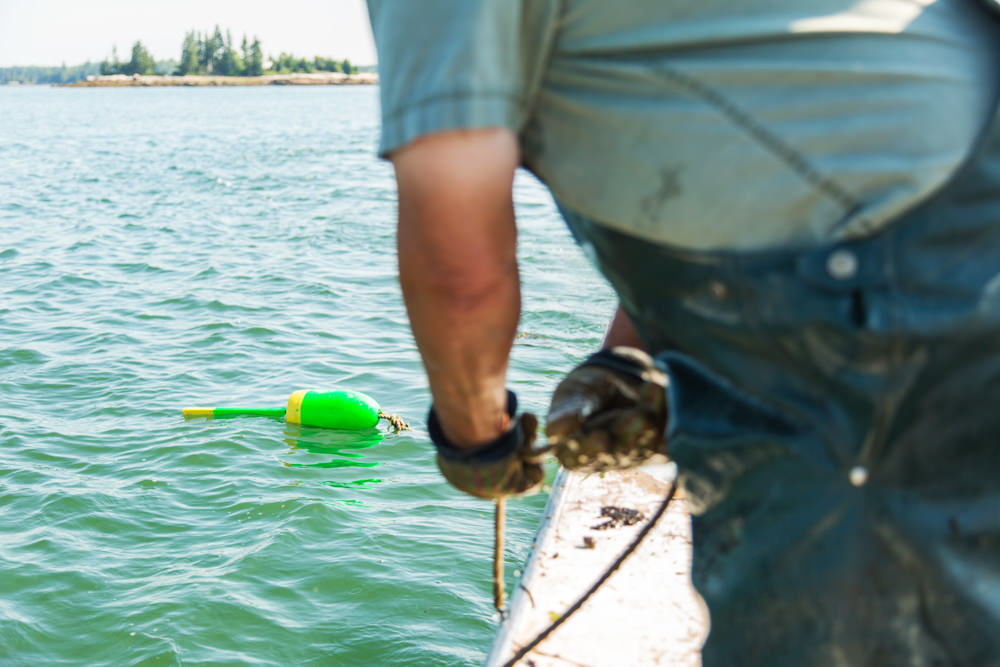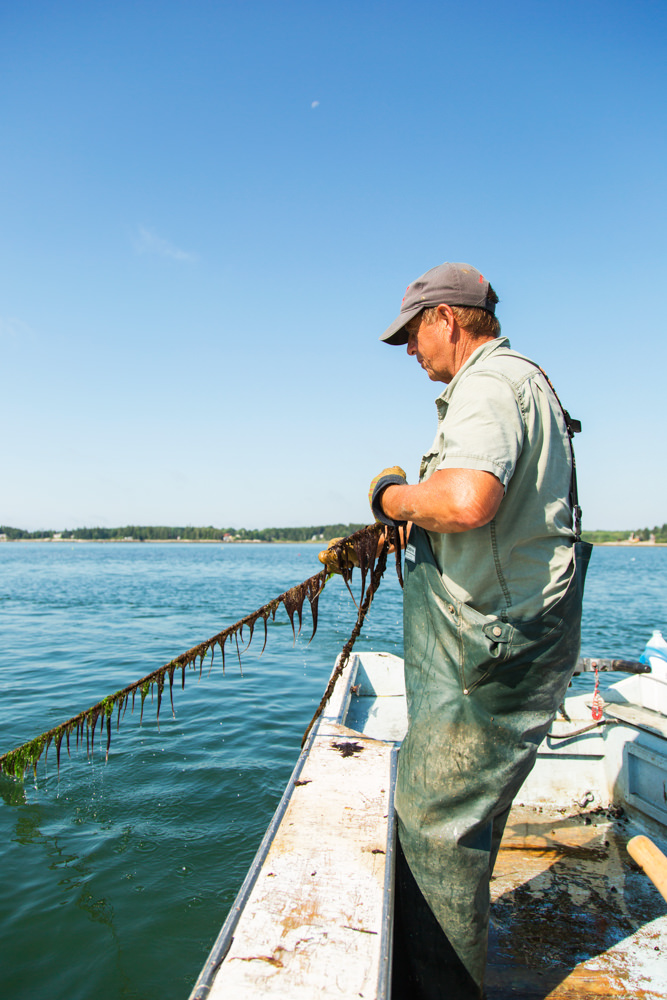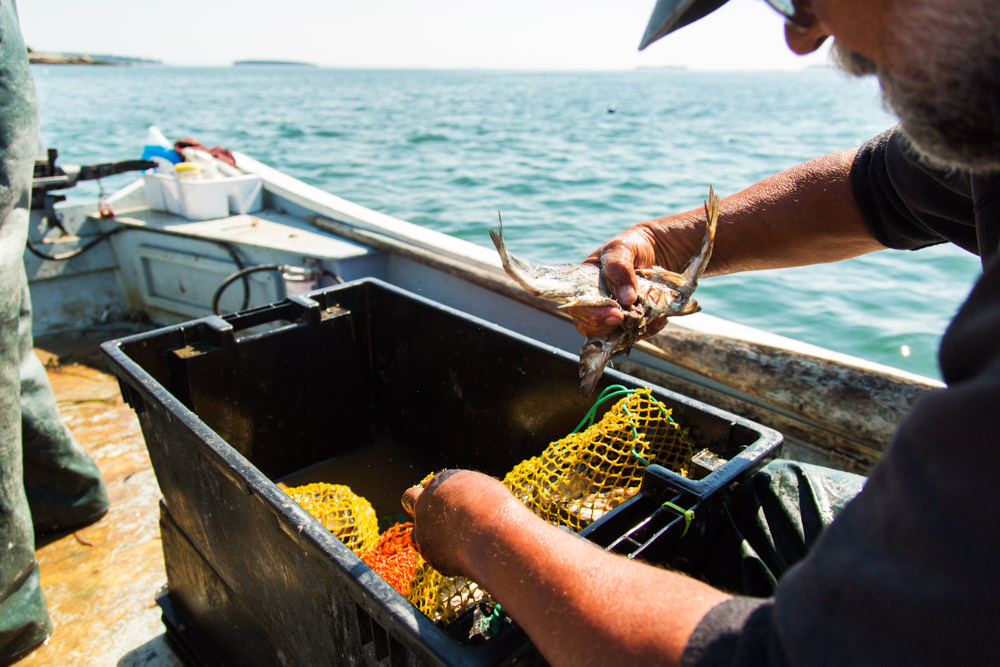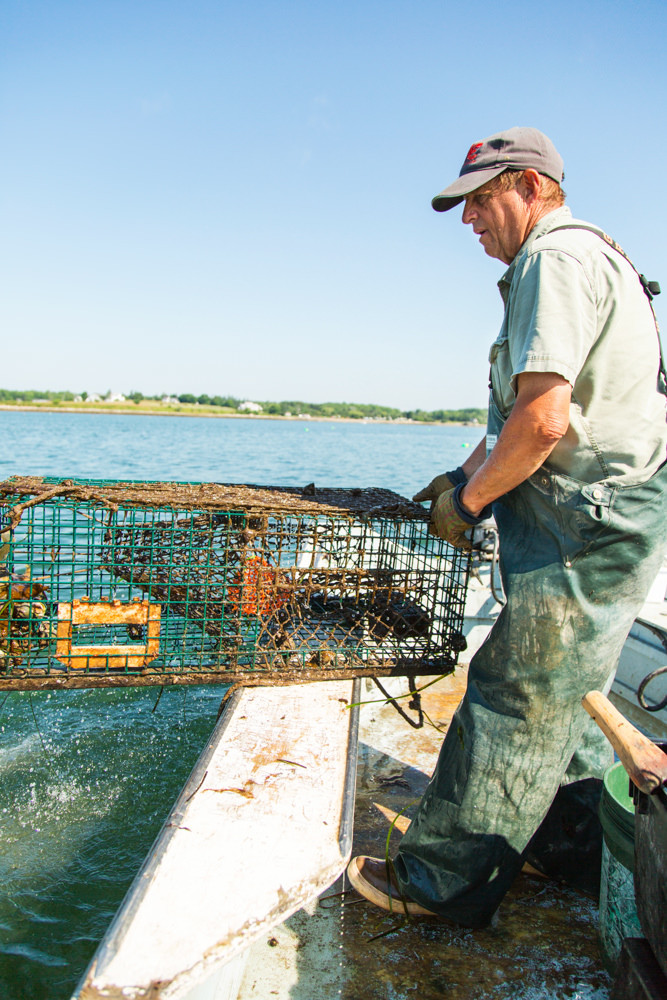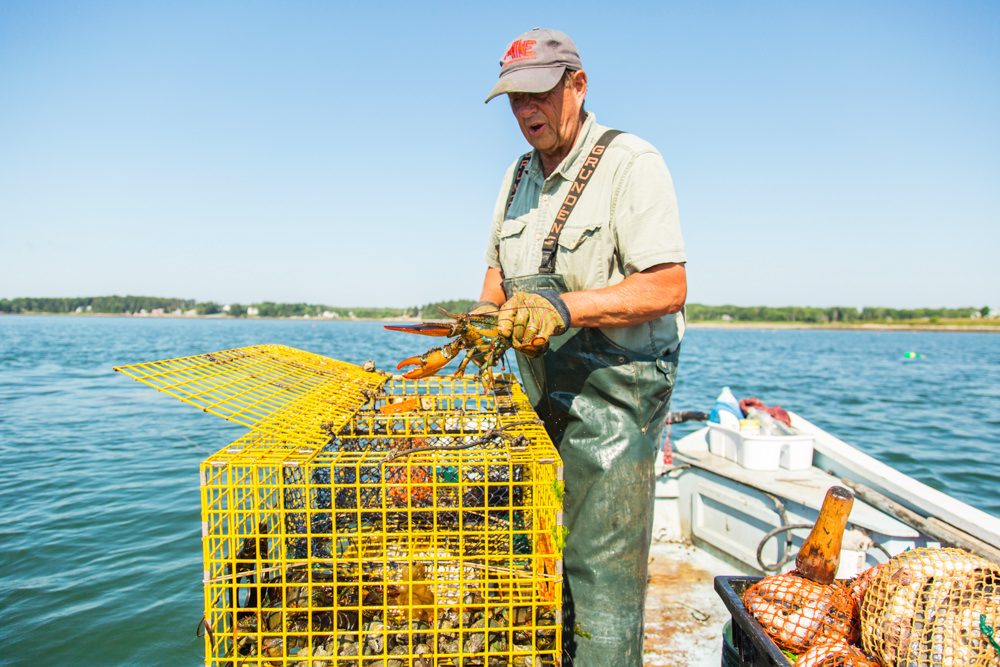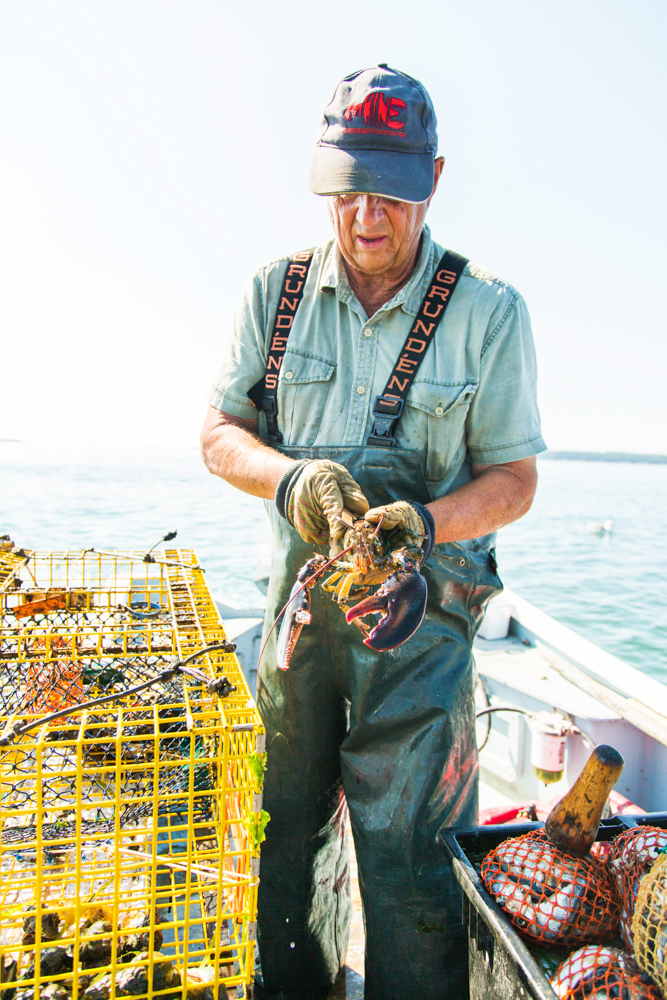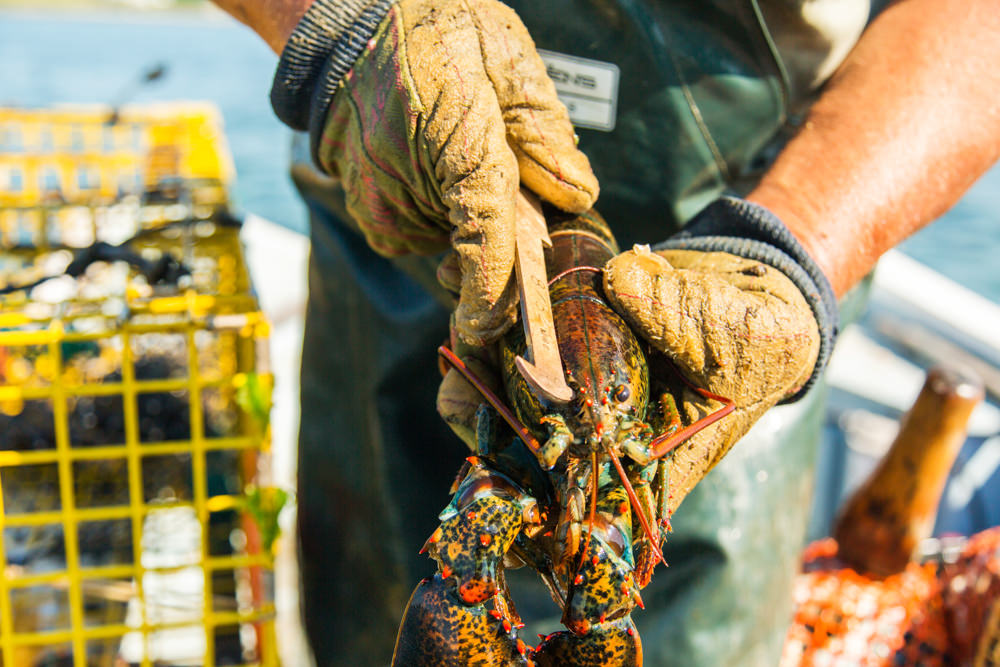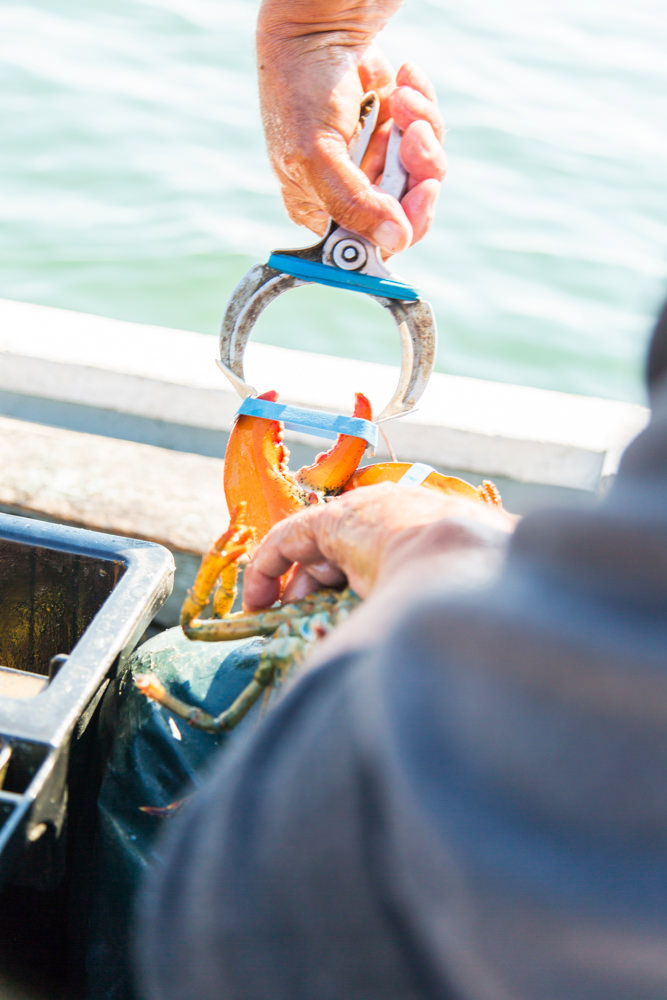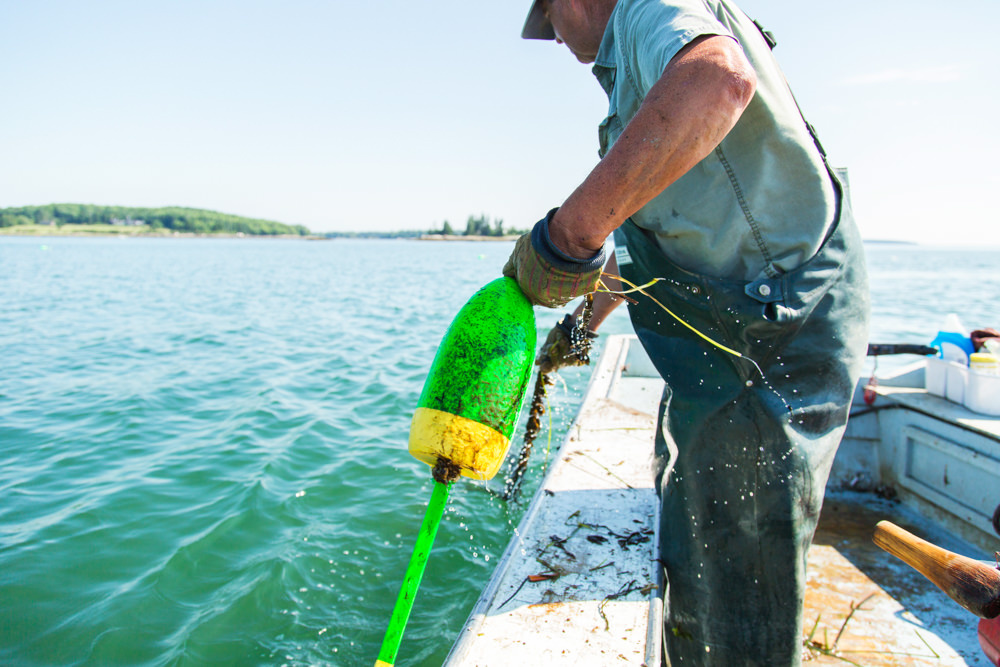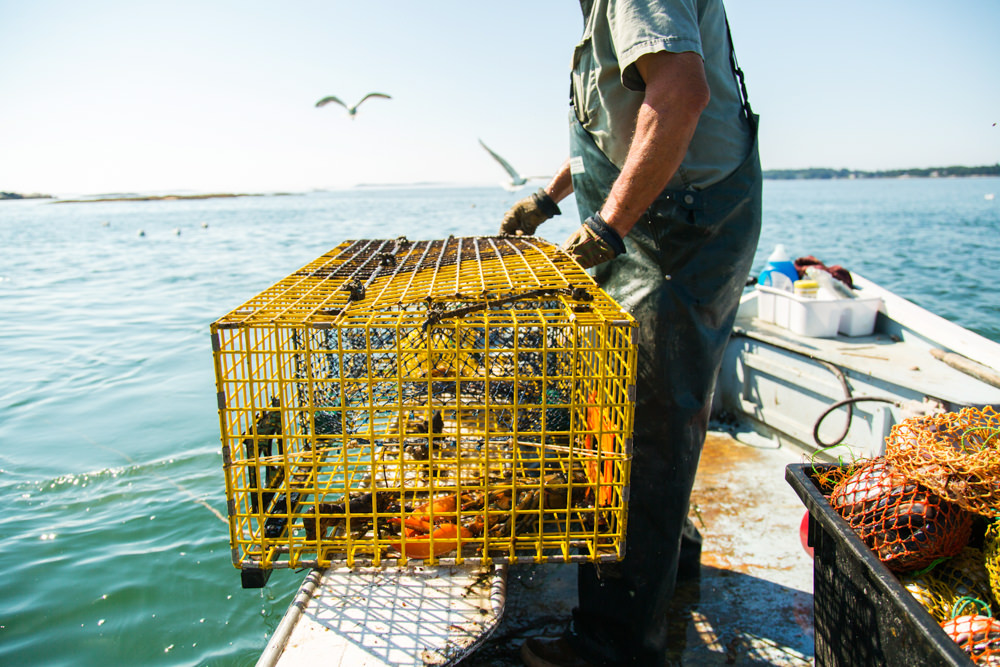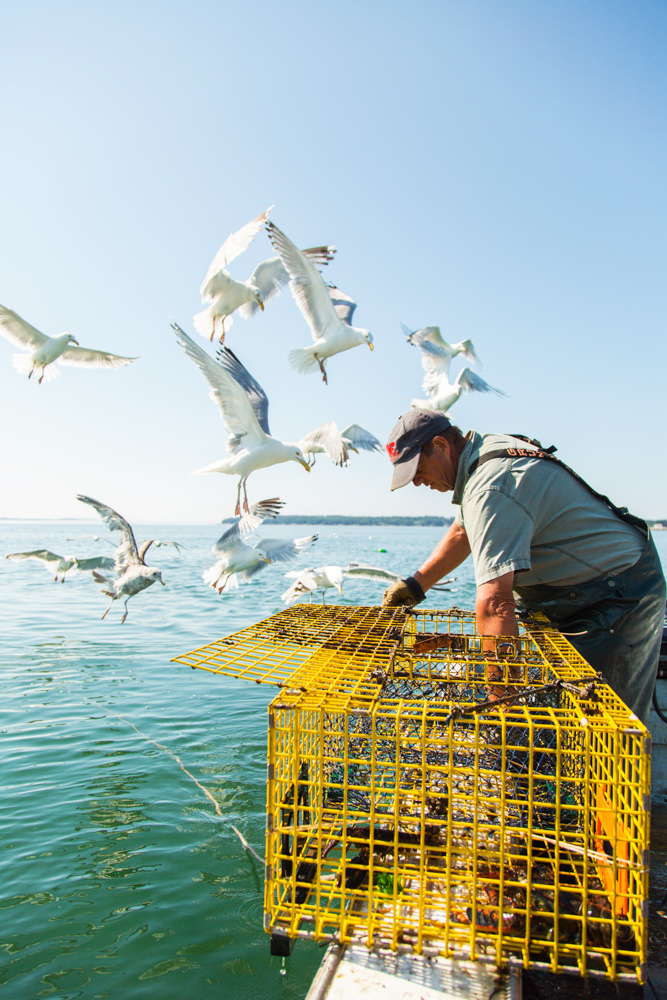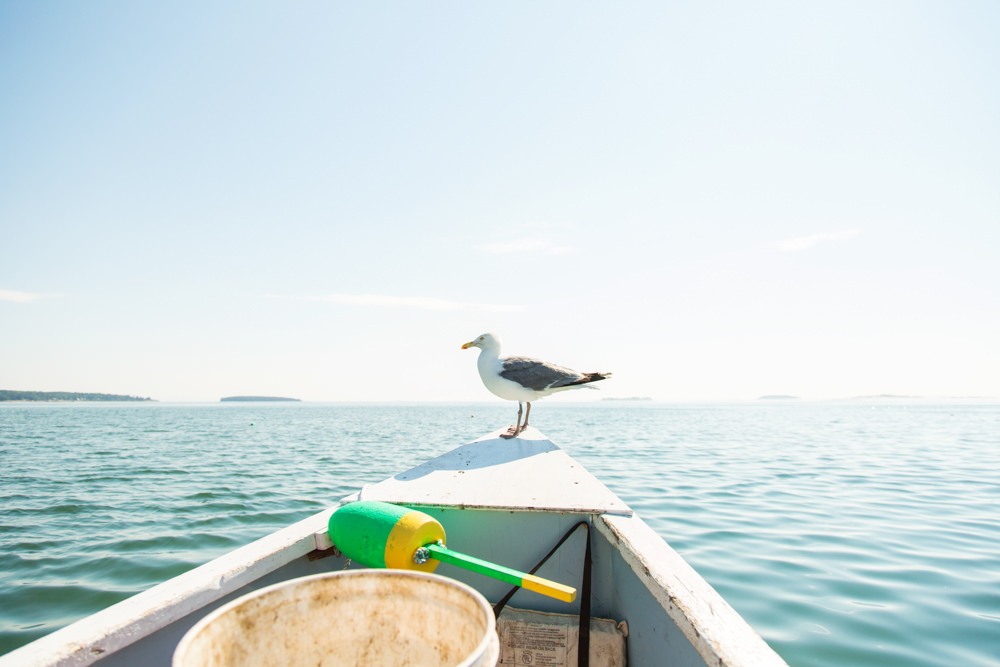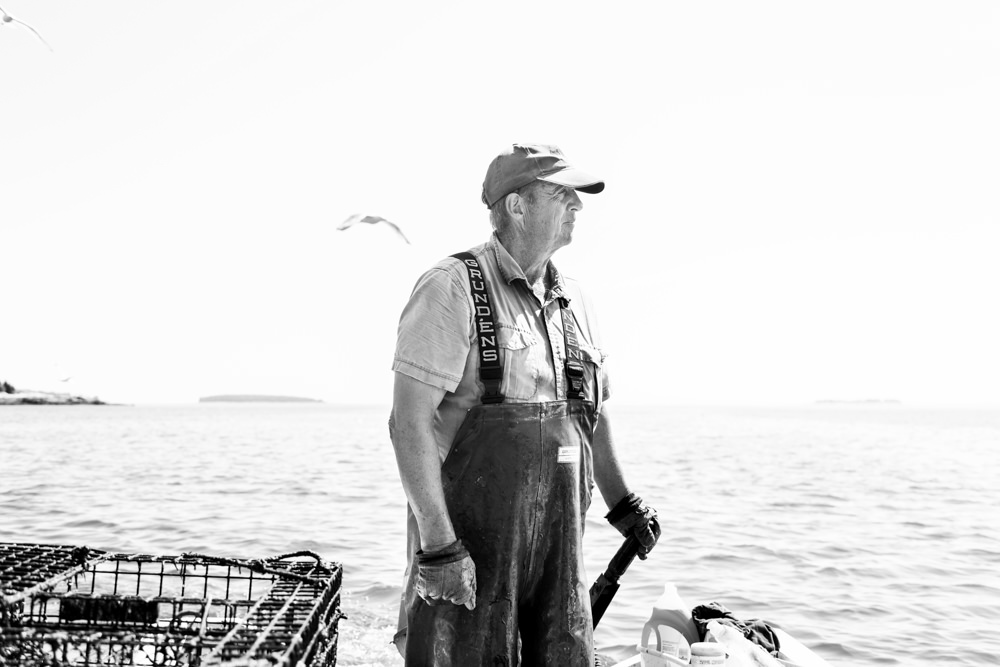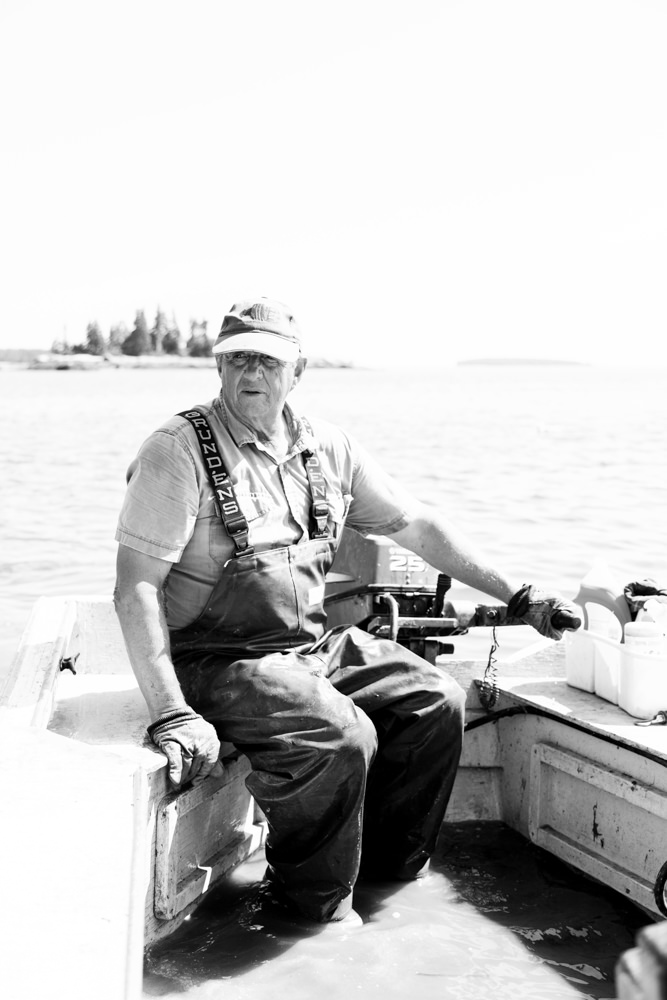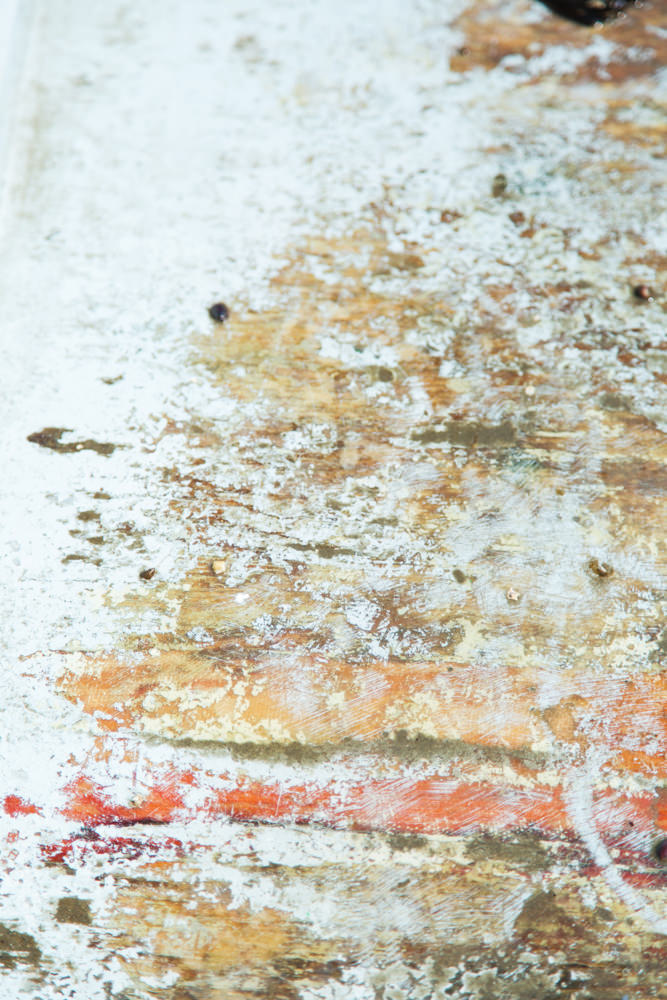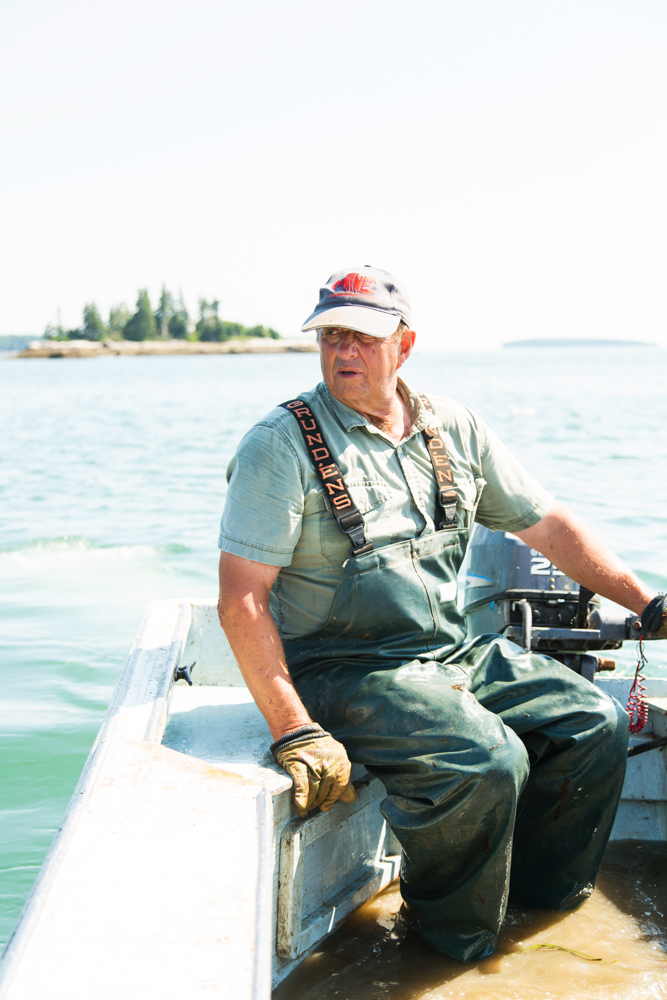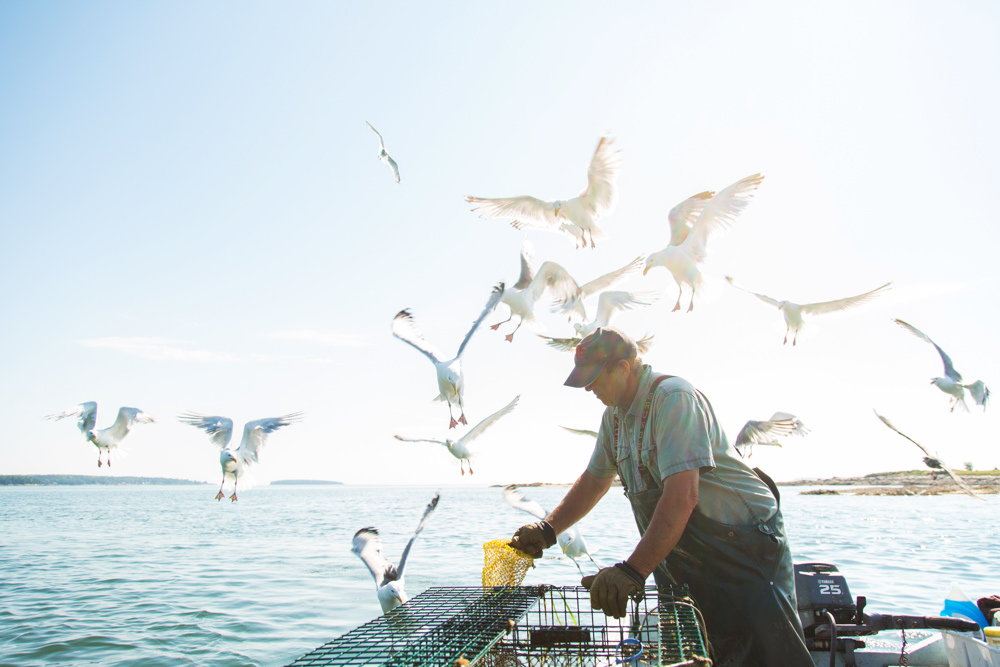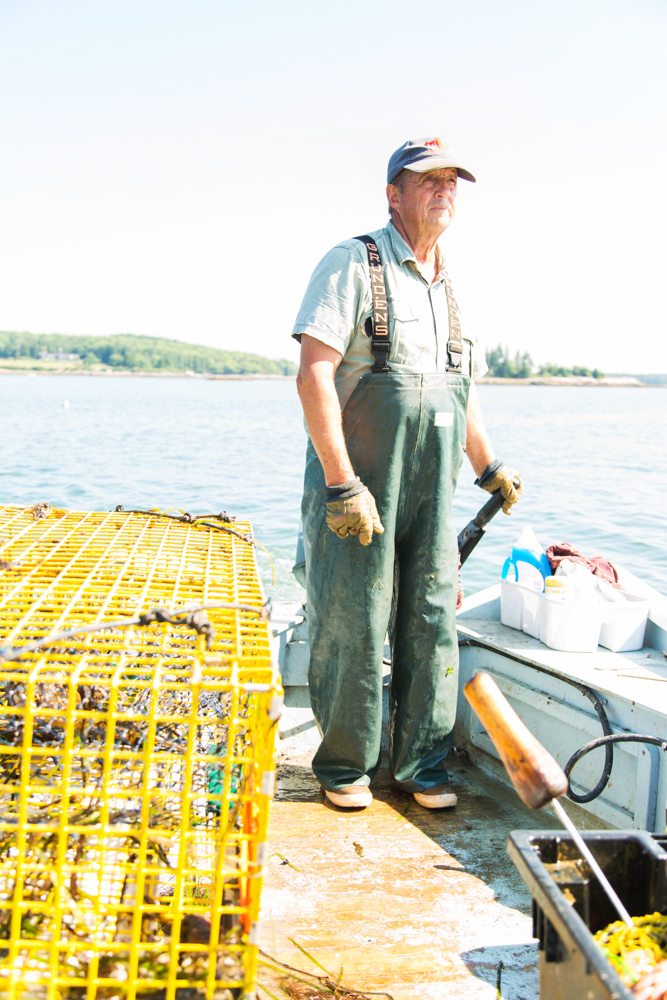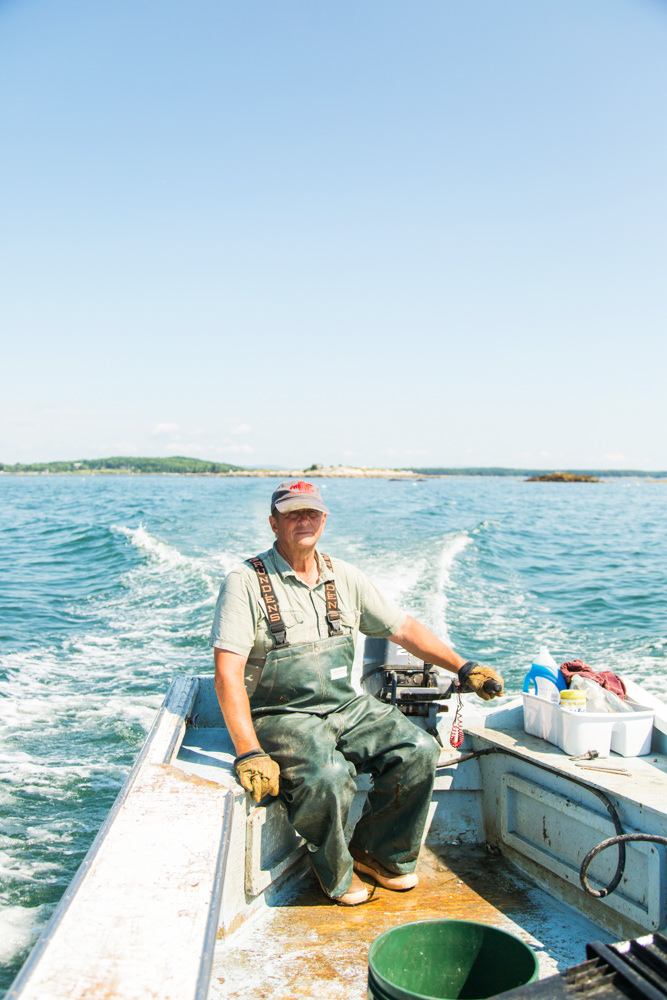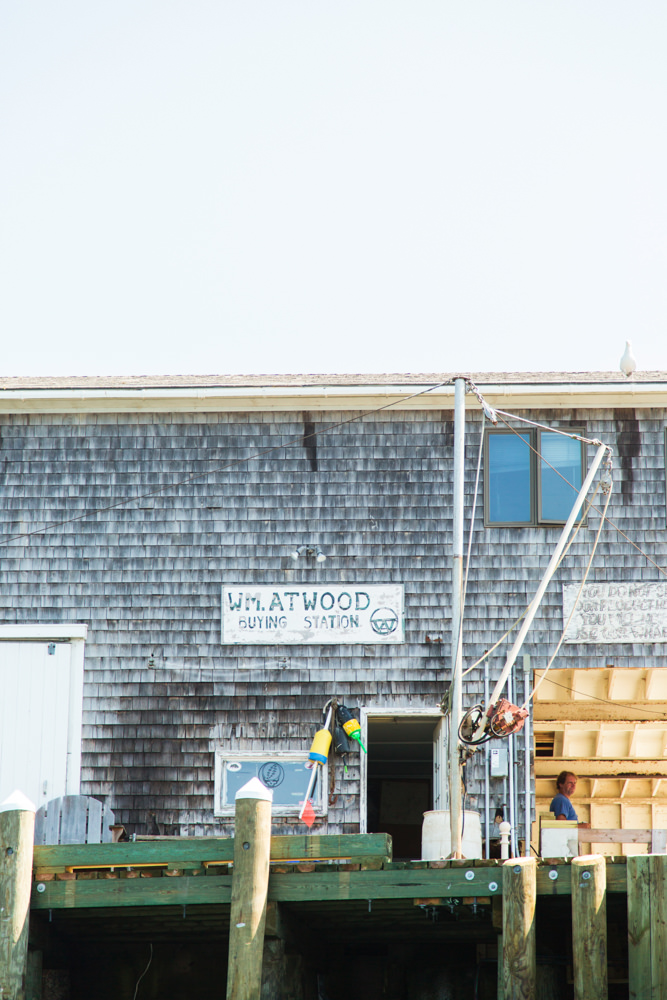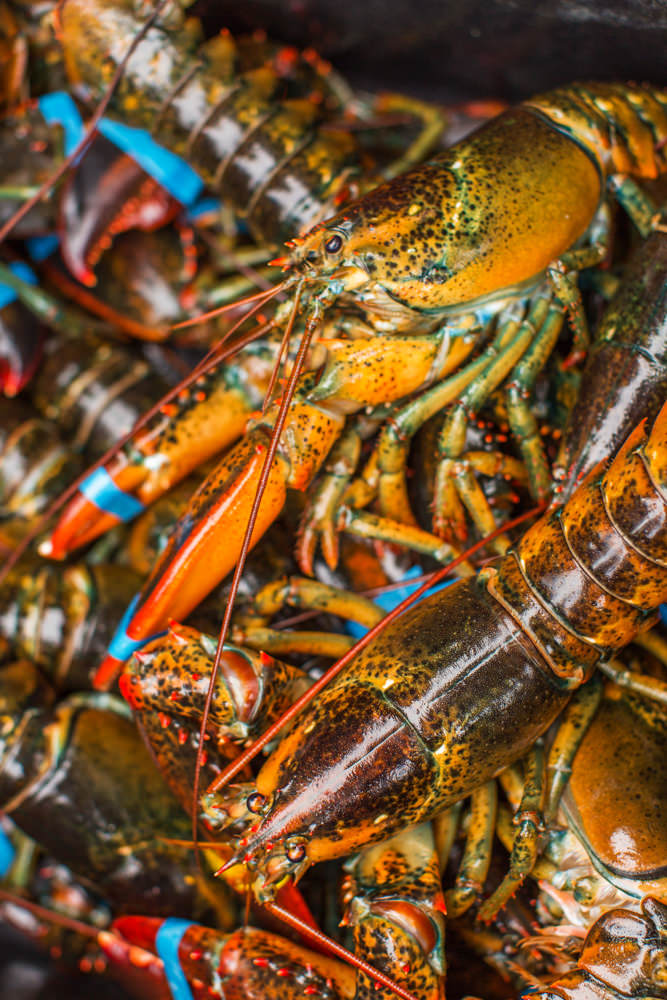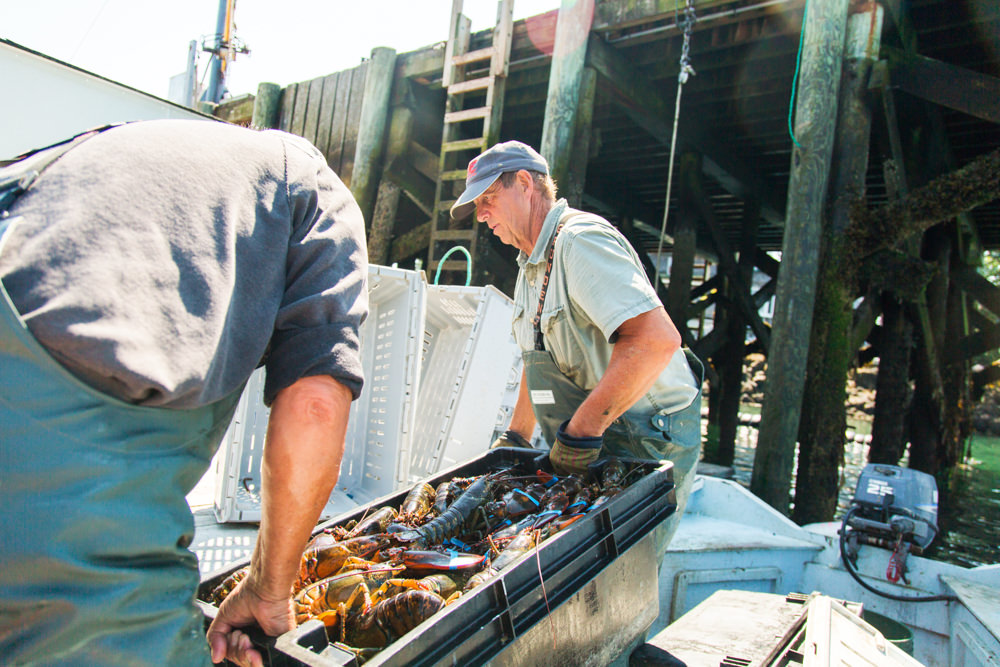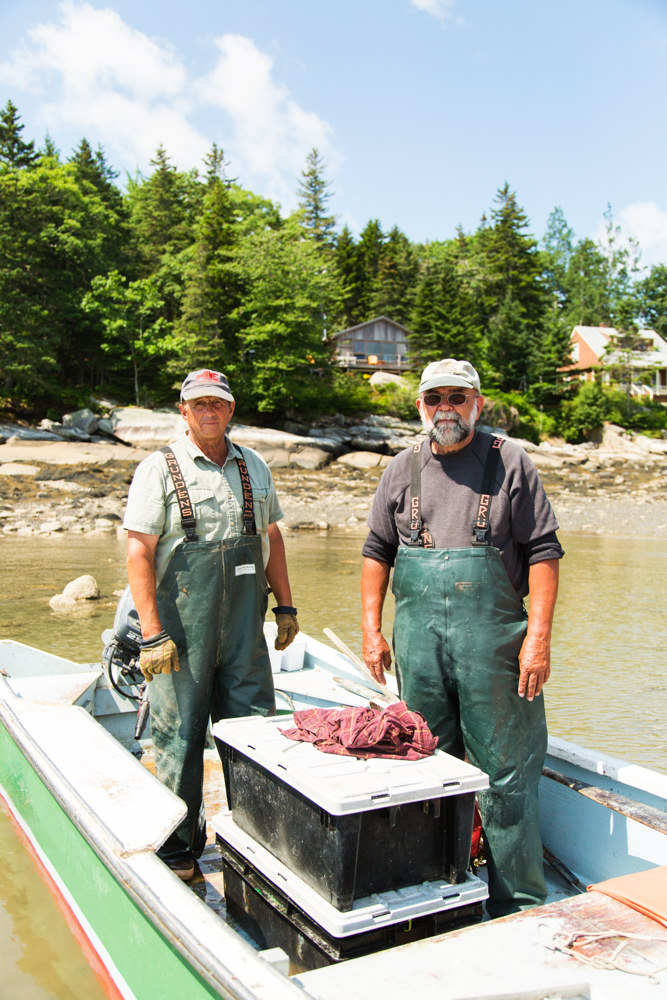Lobster.
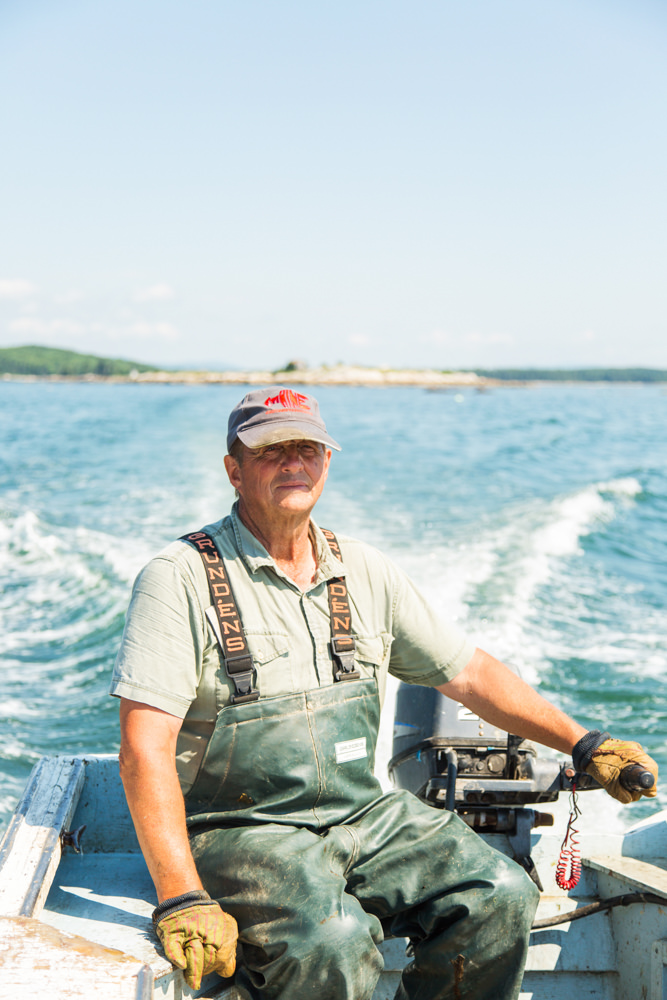
Meet Neil, he is a math teaching, lobsterman from a small town near Rockland, Maine. Neil has been lobstering since he was 12 years old. He teaches high school and college level Math and lobsters after math class. Coincidentally or maybe not so coincidentally, the name of his boat is “Aftermath”. Neil often takes visitors to the area out on his boat to enjoy the full lobstering experience including doing some of the work and I was fortunate enough to be able to ride along (and I didn’t have to do any work!).
Neil’s dad, Harold “Dynamite” Payson, was a boat builder in South Thomaston, Maine. Neil, his dad and brother, designed and built the boat that Neil uses to Lobster in 2008.
For those of you who are familiar with crabbing here in the Carolina’s, the lobstering process is very similar. Actually, the biggest difference is that the lobsters move very slowly out of water in comparison to crabs, so there is very little concern for getting pinched fingers. Neil told me he can always tell when visitors on the boat are familiar with handling crabs because they are so cautious around the lobster claws.
If you are unfamiliar with the crabbing or lobstering process it goes like this: each trap/pot sits on the bottom of the ocean with a line attached to the trap on one end and a buoy on the other. The buoy sits on the surface of the water marking where the trap is. Each lobsterman has his own buoy color to mark which pots are his. Neil’s buoys are fluorescent green and yellow. The traps are pulled up one at a time, and the lobsters taken out, one by one. Each one is measured to make sure it is large enough to keep (the small ones get thrown back in). If the lobster is female and is carrying eggs or if it has a notch in it’s tail it must be thrown back. If the lobster is carrying eggs, the lobsterman puts a notch in it’s tail to notate that it is a reproducing female. If the notched lobster is caught in the future, it must always be thrown back even if it isn’t currently carrying eggs. Once all of the lobsters are out of the trap, a bait bag (stuffed with dead fish, usually herring) is suspended from the trap, the door on the trap is secured shut and the trap is pushed back in the water. The lobsters that are kept have rubber bands put over their claws and are placed in a bin. Then the process starts over.

